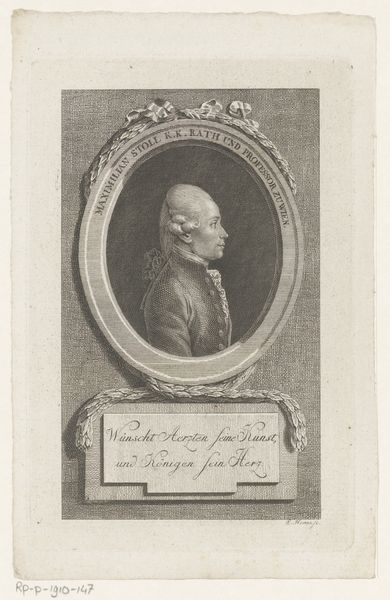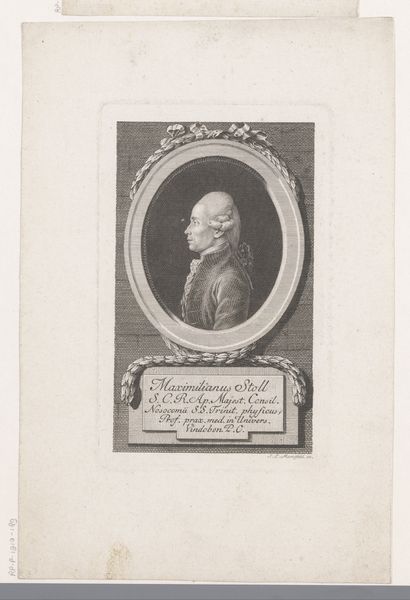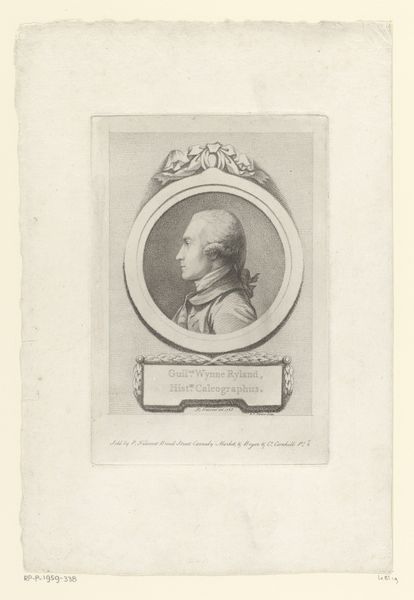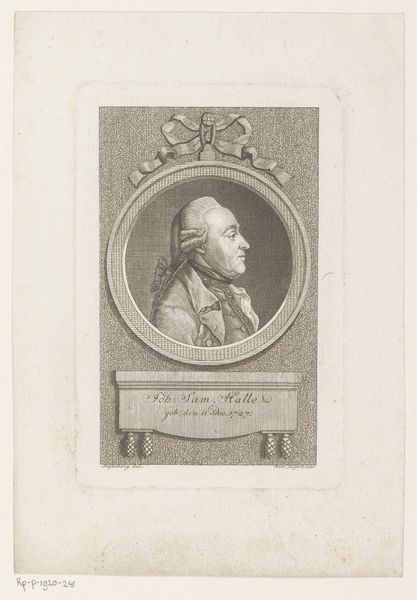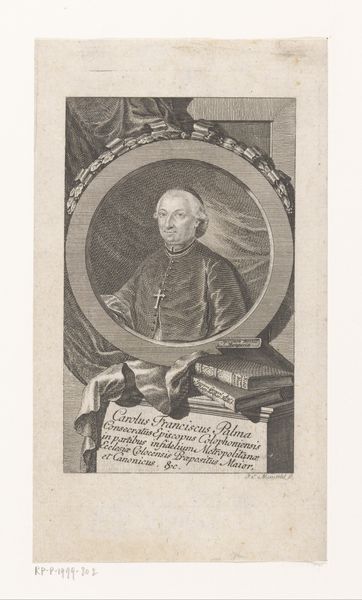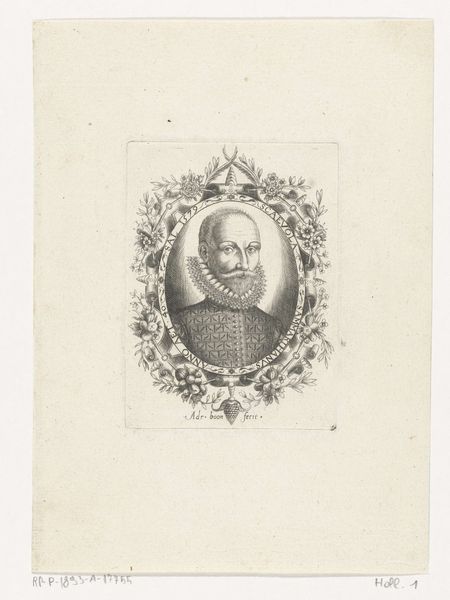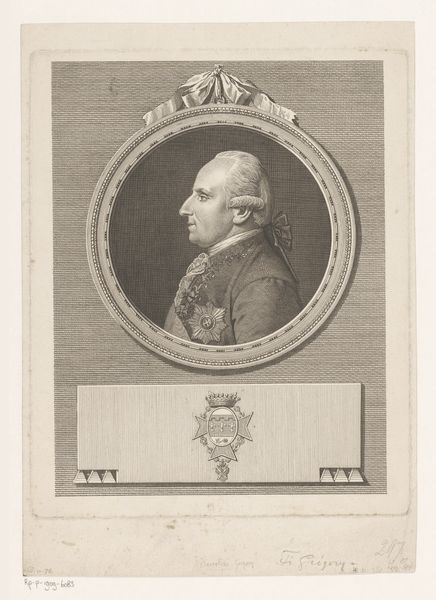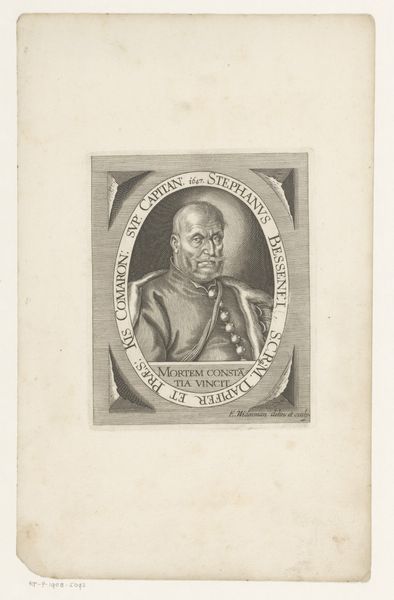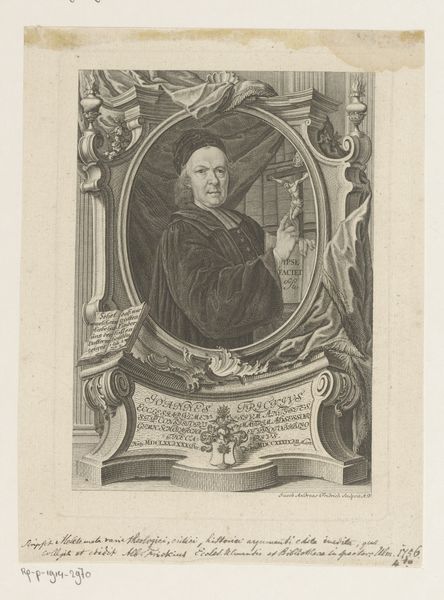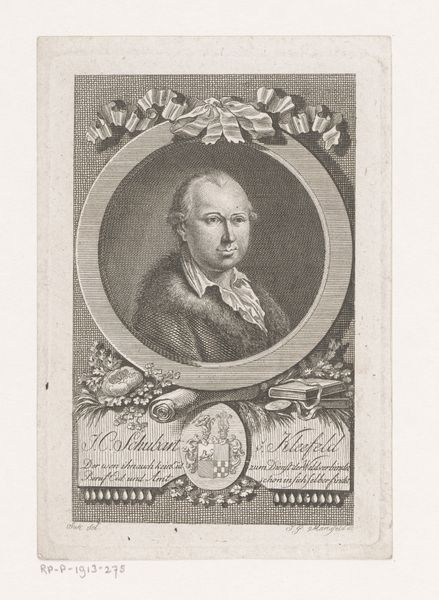
print, engraving
#
portrait
#
neoclacissism
# print
#
old engraving style
#
figuration
#
pencil drawing
#
line
#
history-painting
#
engraving
#
realism
Dimensions: height 177 mm, width 120 mm
Copyright: Rijks Museum: Open Domain
Editor: Here we have Andreas Leonhard Moeglich's "Portret van Paul Carl Welser," an engraving from 1787 held at the Rijksmuseum. I’m struck by the precision of the lines, almost like an industrial rendering. What stands out to you in this piece? Curator: Considering Moeglich's work through a materialist lens, I find myself drawn to the socio-economic context of printmaking. The very act of producing engravings, like this portrait, suggests a specific kind of labor and access to materials. This isn't just about depicting Paul Carl Welser; it's about the democratization of imagery through reproducible means. Editor: Democratization, how so? Wouldn't portraiture, even in print, still be reserved for the elite? Curator: Precisely! That tension is key. Engravings made images accessible to a broader audience than painted portraits, yet the subject matter often remained the domain of the wealthy. So, the means of production offered a glimpse of social leveling while reinforcing existing power structures. Notice the decorative frame; the way the burin bites into the copper plate tells a story about skilled labor and artisanal practice that ultimately caters to consumerism. How does that affect your reading of the work? Editor: I see your point. The image's creation, the labor involved in the engraving itself, reflects the social conditions of the time. It’s not just a portrait; it's a manufactured object within a system. It almost invites us to analyze who consumed these prints and what that consumption represented. It makes you wonder how Welser perceived this form of "mass" consumption of his own image. Curator: Indeed. Examining the materials and processes allows us to consider who benefited from its circulation beyond Welser himself. Every line and flourish signifies social relationships mediated by artistic production. Editor: It gives a whole new meaning to consider the history behind the material itself, not just the subject. Curator: Exactly, from the copper plate to the ink, to its distribution, art unveils a world beyond representation, that of social production and class relations.
Comments
No comments
Be the first to comment and join the conversation on the ultimate creative platform.

